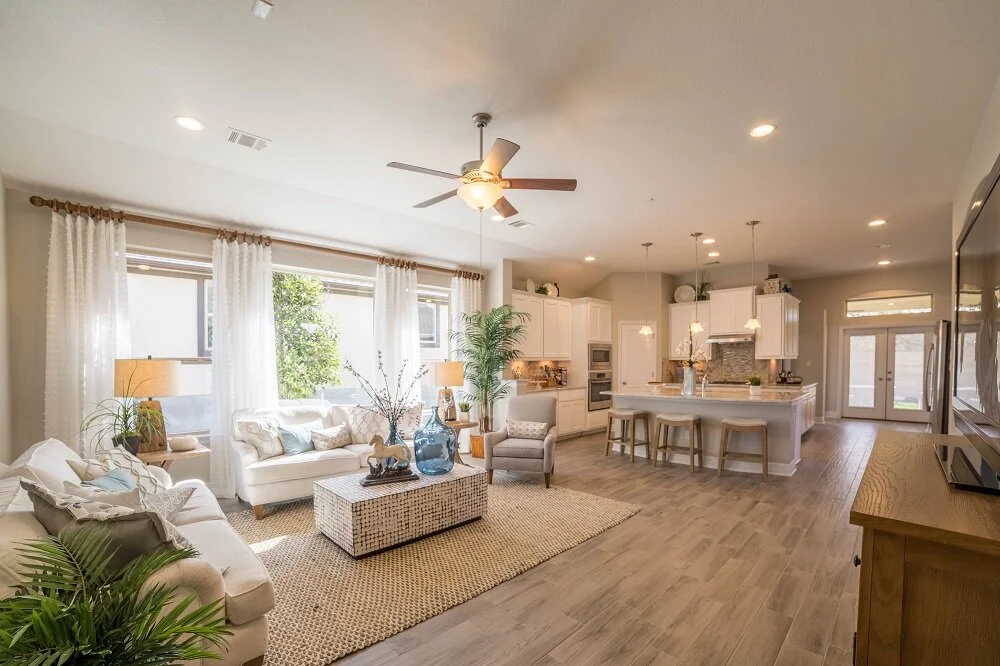Open vs. Traditional Home Layouts
Overall
Here at Legacy Brokers Group, we agree on most of the important things, like using the right subs, communication during projects, and the importance of keeping the coffee pot full. Like most of our clients, however, we differ on some of the aesthetics of home building. We’re split right down the middle on which is better: an open floor plan or a traditional floor plan. We’ll all admit there are pros and cons to each, and so it really comes down to a matter of taste. If you’re torn about which you prefer in your new build, too, don’t worry: in this blog, we’ve compiled some pros and cons to each!
Before we dive in, let’s define what each floor plan is. In a traditional or closed floor plan, each designated area of the home becomes a separate space or room, enclosed with walls. In an open floor plan, no walls exist between the different areas, so a living room, kitchen, and dining area may all share one large space. Here are a few things to consider about each floor plan.
Aesthetics
Open floor plans are often associated with a more modern style, such as those seen in lofts or industrial-style homes, but it can be difficult to give a separate feel to each area of the room. Because it’s one large area, it can be harder to design. The entire room needs to be cohesive, which means that furnishings for a dining room and living room need to not only coordinate with one another but also with the kitchen.
In a closed floor plan, each room can have an individual style, color, or theme. So, while your interior design may be cohesive throughout the entire home, not every detail needs to match, which provides more options and can make designing easier.
One advantage that open floor plans offer, however, is in the lighting. Without walls to break up the design, natural light can filter throughout the space, making the home feel brighter and larger.
Space
Without walls to break up the flow of the room in an open floor plan, it allows people to move around more easily, both for accessibility and socializing. Open floor plans also offer more flexibility when it comes to how you use the space. When there are no walls, it is easier to redesign areas for different purposes.
Walls used in closed floor plans may make areas feel smaller and chop up the home visually. On the other hand, this can also have the effect of making rooms feel cozier and warmer.
Safety
One of the biggest advantages to open floor plans is the line of sight it offers to caregivers and parents. When there are no walls, it is much easier to pay attention to small children or elderly relatives who may need constant supervision. In an open floor plan, you can be in the kitchen cooking and still see your children in the living room, for example. This is not always possible in closed-format homes.
Privacy
When it comes to privacy, however, open floor plans have limits that closed floor plans do not. Without doors or separate rooms, it can be more difficult to carry out certain tasks without others seeing you. Walls and doors offer more sound-proofing for the home, giving greater privacy as well.
Smells
Some people dislike cooking smells in the house. In an open floor plan, the kitchen is open to the living areas of the home. This means that strong cooking odors travel throughout the house. For some people, this can be a drawback, particularly if you cook with spices or are susceptible to smells.
Cleanliness
With clutter, it can be easier with a closed floor plan to shut the doors to certain rooms when company comes to make the home appear cleaner. However, in an open floor plan, the flooring typically remains the same, so you wouldn’t have to switch between a mop and a vacuum, for example. Easier and faster!
Resale Value
Depending on the location, market, and architectural style of the home, open floor plans may have an advantage when it comes to resale, at least currently. Many people like the open concept, which has been increasing in popularity in the last several years. In fact, more than 70% of buyers request an open floor plan in the homes they look at, which may make an open floor plan more sellable as well. However, as with any trends, this may change - open floor plans rule in popularity right now, but who knows if or when a traditional may make a comeback!
So what’s the verdict? We think it’s completely up to you! Both open and closed floor plans have advantages and disadvantages, so it’s really up to what YOU want. After compiling this list, we’re all still split on which floor plan we think is best, but we all agree that both can be beautiful!













